Archives
Nagaland A Saga of Strife
Nagaland A Saga of Strife
The Naga political problem which has spanned decades has many long stories to tell. Basically, the Naga political movement was for the Nagas to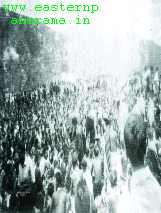 live as a ‘free nation’ but it became complicated when the British left India without settling many problems including those of the Nagas. In fact, when they left, they unloaded a big political mess in the Indian sub-continent. As such, the British are more to blame than India for the tumult that we witness today.
live as a ‘free nation’ but it became complicated when the British left India without settling many problems including those of the Nagas. In fact, when they left, they unloaded a big political mess in the Indian sub-continent. As such, the British are more to blame than India for the tumult that we witness today.
In spite of all these, the Naga leaders of Naga National Council (NNC) started engaging in a series of discussions with leaders of India prior to the British’s transferring of power to them (India), expressing their clear desire of living as a free nation. After realising that discussions on the matter would lead nowhere, the NNC leaders went ahead and declared Naga Independence on August 14, 1947, one day ahead of Indian Independence on August 15, 1947. This is the turning point in the history of the Naga political struggle.
To strengthen their movement and reaffirmation of Independence, the NNC had conducted a ‘National Plebiscite’ on May 16, 1951 and later stated that 99.9 percent of Nagas voted in favor of ‘a sovereign Nagaland.’ With this mandate, the NNC adopted the Constitution of Nagaland on March 22, 1952.
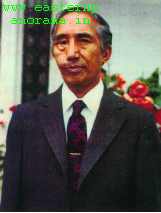 This ‘extraordinary’ development raised the specter of a huge trust deficit between the Government of India and the NNC. In the meantime, NNC continued their vigorous campaign of consolidating their position and the situation did not erupt till the time that Delhi took a decision to crush the surging Naga movement with India’s military might.
This ‘extraordinary’ development raised the specter of a huge trust deficit between the Government of India and the NNC. In the meantime, NNC continued their vigorous campaign of consolidating their position and the situation did not erupt till the time that Delhi took a decision to crush the surging Naga movement with India’s military might.
To give extra ordinary power to the security forces fighting against the Naga underground, Delhi, for the first time, brought out the ‘Armed Forces Special Power Act, 1958.’ It has become one of the most controversial Acts in the country today – drawing flak from around the world. Nagaland was like a laboratory for the Indian army to experiment with the new ‘Act.’ One can only imagine the hellish situation of the 50s, 60s and 70s when the Nagas had hardly realized the nature of the Act. It took decades for people to realise the draconian nature of this Act.
Strangely, it took Delhi 42 years to declare the Naga issue as ‘political.’ It was Prime Minister PV Narasimha Rao who, while visiting Nagaland in 1989 had declared that “The Naga issue is political,” and “It needs political solution.”
When Manipur was engulfed in flames after Assam Riles jawans allegedly raped and murdered Th Manorama, an Indian Army General commented that the Army was not the solution to the issue rather, it needed a political approach. The Army took 57 years to realise the futility of using force against the region’s insurgency problems.
People may say many things of the Naga political struggle today but if one looks back to the 50s, it simply pales in comparison with regard to the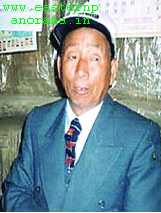 atrocities perpetrated. Through interaction with many Naga elders in many villages, a recurring theme emerged in their discourse, a theme of untold suffering of the Naga people meted out through the hands of the Indian army. Most of the boys in the 50s could not go to schools for fear of being beaten or arrested, while males including teenage boys had to take shelter in the jungles, sometimes for periods ranging to months. Some of these boys starved to death in the jungles. All these horrendous acts were perpetrated on the innocent Naga villagers in the name of fighting the Naga underground.
atrocities perpetrated. Through interaction with many Naga elders in many villages, a recurring theme emerged in their discourse, a theme of untold suffering of the Naga people meted out through the hands of the Indian army. Most of the boys in the 50s could not go to schools for fear of being beaten or arrested, while males including teenage boys had to take shelter in the jungles, sometimes for periods ranging to months. Some of these boys starved to death in the jungles. All these horrendous acts were perpetrated on the innocent Naga villagers in the name of fighting the Naga underground.
By then, most of the NNC leaders went ‘underground’ as they were hunted down by the Indian army and in fact, one of the most charismatic Naga leaders, AZ Phizo himself had to flee to London. It is unfortunate that though the British knew very well of the mess they had left behind in India, they did not help in finding solution to the problem they had created; they simply washed their hands off it. They did not object to Phizo taking shelter in Britain either. The way that the British have played with the Naga situation is akin to mockery.
There are a million and one untold stories of the plight of the Nagas because in those early days, no pressmen, no outsiders (read foreigners), no communication facilities were available. The Nagas did not realise the importance of voicing accounts of their plight to the outside world either. It was only after the mid 90s or thereabouts, after Delhi’s ceasefire with NSCN (IM) in 1997, that the importance of mass media dawned on Nagaland.
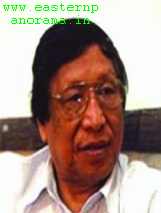 There were various occasions where many Naga leaders both overground and underground tried to solve the Naga political problem. Overgound Naga leaders initiated the process and even contacted Phizo at London. We have seen a series of correspondence between many state politicians including Dr SC Jamir and Phizo.
There were various occasions where many Naga leaders both overground and underground tried to solve the Naga political problem. Overgound Naga leaders initiated the process and even contacted Phizo at London. We have seen a series of correspondence between many state politicians including Dr SC Jamir and Phizo.
The emergence of the Naga People’s Convention (NPC) had changed the course of Naga history as they were responsible for the birth of the full-fledged statehood of Nagaland in 1963. In the following year in 1964, a ceasefire was declared between the Government of India and the Federal Government of Nagaland (FGN) through the initiative of the NBCC. Subsequently, they were engaged in political talks to find a settlement to the problem. The talks collapsed after six rounds. The problem remained and became more compounded as there were Naga leaders who ran the affairs of the Indian state of Nagaland needing to defend the ‘Sovereignty and Unity of India.’ The Naga underground became more aggressive needing to fight against its own people on the one hand and the Indian army on the other. The political process became trickier and riskier. Assassinations of Naga leaders started. The Naga underground leaders and the Naga overground people were at loggerheads over the Naga issue.
The Shillong Accord came into being in 1975. This Accord had done the maximum damage to the NNC. The immediate fallout of this Accord could be seen by the formation of another Naga underground group – The National Socialist Council of Nagaland (NSCN) in 1980. After about a decade, the NSCN was split into two in 1988—one headed by Isak Chishi Swu and Th Muivah and the other by SS Khaplang and Dally Mungro. Following the split, hundreds of Naga underground cadre and high functionaries including Dally Mungro lost their lives through factional clashes. Sadly, this continued on a large scale even after the Government of India’s ceasefires with NSCN (IM) and NSCN (K). This had led many intellectuals and intelligentsias to questioning the rationality of the ceasefires with the Government of India. Some posed questions as to why the Naga underground groups could not cease fighting amongst themselves when they could do so with the Indian security forces, while many cast a questioning glance on New Delhi’s role of a mute spectator by allowing the factions to engage in a free for all. This is where mass based Naga civil societies stepped in to intervene.
Even after the present DAN Government came into power, they set up committees to facilitate unity and reconciliation amongst the factions. In its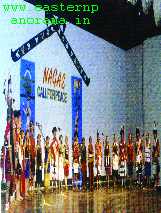 second tenure, the DAN government constituted the Political Affairs Committee (PAC). Its members had extensively travelled and met leaders of various factions. They discussed the exigency of having unity and reconciliation amongst them. Everything ran smoothly till the time that the PAC mooted the idea of having a ‘Naga Common Platform.’ Members for the Naga Common Platform would be drawn up from different political parties, NGOs, representatives from all the tribal hohos, veteran Naga politicians in the likes of Dr SC Jamir, Chief Minister Neiphiu Rio, RC Chiten Jamir, etc. The basic premise of such an arrangement is to evolve a consensus or majority opinion of the Naga people towards ongoing talks with New Delhi. With such a mandate endorsed, the Naga underground leaders could talk with New Delhi.
second tenure, the DAN government constituted the Political Affairs Committee (PAC). Its members had extensively travelled and met leaders of various factions. They discussed the exigency of having unity and reconciliation amongst them. Everything ran smoothly till the time that the PAC mooted the idea of having a ‘Naga Common Platform.’ Members for the Naga Common Platform would be drawn up from different political parties, NGOs, representatives from all the tribal hohos, veteran Naga politicians in the likes of Dr SC Jamir, Chief Minister Neiphiu Rio, RC Chiten Jamir, etc. The basic premise of such an arrangement is to evolve a consensus or majority opinion of the Naga people towards ongoing talks with New Delhi. With such a mandate endorsed, the Naga underground leaders could talk with New Delhi.
Unfortunately, the formation of the Naga Common Platform did not materialize and the emergence of Joint Legislators Working Group (JLWG) has actually overtaken the role of PAC. Thereby the role of PAC carried no weight at this juncture and it appears to be only duplication.
On the other hand, the Forum for Naga Reconciliation (FNR) also came into being in 2008 with renowned priest Rev Wati Aier as Convener. Since then, they had initiated a series of programs for leaders of various Naga underground groups to meet and voice their grievances in an atmosphere of love and tolerance. They succeeded in breaking the ice and further strengthen the journey of common hope. Who would have believed that the members of the NSCN factions would agree to meet each other and form a combined team to play soccer against a combined team of different Naga NGOs. Impossible as it may seem, the idea actually materialised. Subsequently, the ball started rolling and gradually the specter of fear of meeting one another has drastically reduced.
These successive positive developments could pave the way for the top leaders of the factions of the NSCN and NNC/FGN to come and attend the ‘Highest Level Meeting’ of leaders of the Naga underground groups. The FNR has indeed come a long way since its birth with a mission.
This ‘Highest Level Meeting’ for top leaders of the NSCN (IM), NSCN (K) and NNC/FGN is a landmark. One should give credit to the FNR and other agencies working tirelessly to make the event a success. NSCN (IM) General Secretary Th Muivah, NSCN(K) General Secretary N Kitovi Zhimomi and NNC/FGN President S Singnya along with their senior kilonsers (ministers) attended the historic ‘Highest Level Meeting’ and called it the “September Naga Summit” on September 18 at Dimapur which would go down in the annals of Naga political history. The three leaders had inked a ‘Covenant of Reconciliation,’ committing to work out their differences as outlined in it (Covenant of Reconciliation).
This would end the most unwanted factional killings and begin a new chapter in the saga of Naga Reconciliation.

